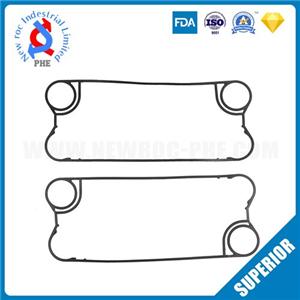How to reduce the flow resistance of plate heat exchanger
After many years of study and accumulation of experience, the following are some of our methods to reduce the resistance of plate heat exchanger equipment:
1. Choose the appropriate structure of the heat exchanger plate
According to the heat transfer characteristics and pressure drop requirements of the hot and cold fluids, select the appropriate wave geometry of the heat exchanger plates to form a plate heat exchanger with appropriate cross-sectional areas of the cold and hot runners to reduce the pressure drop.
In addition, when the flow of cold and heat medium is relatively large, the use of an asymmetric single-process plate heat exchanger can reduce the plate area by 15% to 30% compared to the use of a symmetric single-process plate heat exchanger.
2. Adopt thermal mixing heat exchanger plate
The heat exchanger plates of the thermal mixing plate have the same corrugated geometric structure on both sides. The plates are divided into H plate and V plate according to the angle of the herringbone corrugation. The angle is generally 120°.
3. The heat exchanger plate adopts multi-process combination
It adopts multi-process combination arrangement, and uses more processes on the side of small flow to increase the flow rate and obtain a higher heat transfer coefficient. The large flow side adopts fewer processes to reduce the resistance of the plate heat exchanger. Mixed flow patterns appear in the combination of multiple processes, and the average heat transfer temperature difference is slightly lower.
4. Add bypass pipe for plate heat exchange equipment
When the flow of cold and heat medium is relatively large, a bypass pipe can be set between the inlet and outlet of the plate heat exchanger on the large flow side to reduce the flow into the plate heat exchanger, thereby reducing the resistance of the plate heat exchange equipment. In order to facilitate adjustment, a regulating valve should be installed on the bypass pipe. This method should adopt a countercurrent arrangement to make the temperature of the cold medium exiting the plate heat exchanger higher, to ensure that the temperature of the cold medium after the exit of the plate heat exchanger merges can meet the design requirements, to ensure a higher heat transfer coefficient of the heat exchanger, and reduce Equipment resistance.
The resistance of the plate heat exchanger is relatively large, which will have a certain impact on its working efficiency, and in severe cases, it will cause damage to the parts of the equipment. Therefore, when choosing a plate heat exchanger, a reasonable choice should be made according to the actual working conditions.




